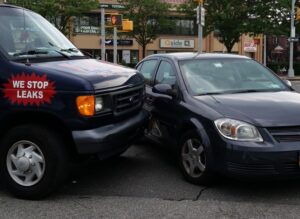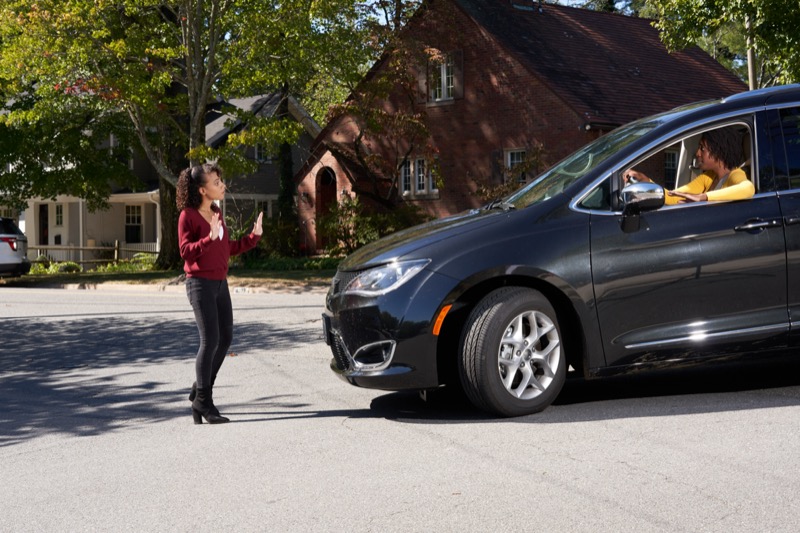Automatic braking systems are a very cool advanced driver assistance technology. On a new vehicle, they alert the driver to an impending crash and will automatically apply the brakes if the driver doesn’t intervene in time.
The alerts alone are a game changer. We know of instances where a driver has drifted off, then realized the vehicle in front of them is closer than they thought, which leads to an abrupt application of the brakes. If the driver isn’t distracted, an alert will get them out of a temporary daydream and save the day. That’s why we promote the use of aftermarket collision alert systems such as those from Mobileye. The beauty of an aftermarket system is that it can be installed on a vehicle (especially one that your teenager drives) today, long before the technology is mandated.
The Waiting Is the Hardest Part
 The National Highway Traffic Safety Administration has proposed a rule that would make automatic emergency braking mandatory on all new cars. The process is still in its early phases, though the change would require new vehicles to have a system that can detect and automatically brake for other vehicles as well as pedestrians, day or night, at speeds up to 62 miles per hour.
The National Highway Traffic Safety Administration has proposed a rule that would make automatic emergency braking mandatory on all new cars. The process is still in its early phases, though the change would require new vehicles to have a system that can detect and automatically brake for other vehicles as well as pedestrians, day or night, at speeds up to 62 miles per hour.
Secretary of Transportation Pete Buttigieg said the plan is part of “an important step forward to save lives and make our roadways safer for all Americans. Just as lifesaving innovations from previous generations like seat belts and air bags have helped improve safety, requiring automatic emergency braking on cars and trucks would keep all of us safer on our roads.”
NHTSA Chief Council Ann Carlson said, “We’ve seen the benefits of the AEB system in some passenger vehicles already even at lower speeds, and we want to expand the use of the technology to save even more lives. That’s why our proposed rule would require all cars to be able to stop and avoid contact with a vehicle in front of them up to 62 miles per hour. And the proposal would require pedestrian AEB, including requiring that AEB recognize and avoid pedestrians at night. This proposed rule is a major safety advancement.”
The problem is the long timeline for this proposal to establish a new standard. The NHTSA is receiving public comments about the proposal, after which it will decide whether to go ahead with the change in September 2023. If it does, automakers will have four years to comply. So, we’re looking at the technology becoming mandatory at the earliest in late 2027 for 2028 models.
Price is another concern. Not everyone has the budget to purchase a vehicle that has braking alerts or automatic collision avoidance. The average vehicle in America is over 12 years old. Aftermarket technologies can easily bring them up to current safety standards.
Right Idea, Slow Response
 The proposed rule is a key component of the Transportation Department’s National Roadway Safety Strategy. This initiative was launched in January 2022 to address the national crisis in traffic fatalities and serious injuries from traffic accidents. Its goal is to build multiple layers of protection with safer roads, safer people, safer vehicles, safer speeds and better post-crash care. As part of the safe-system approach, this rule reflects the department’s effort to expand vehicle systems and features that help prevent crashes. All of this is great, but we all know that governmental change takes a long time. We want to protect our loved ones today.
The proposed rule is a key component of the Transportation Department’s National Roadway Safety Strategy. This initiative was launched in January 2022 to address the national crisis in traffic fatalities and serious injuries from traffic accidents. Its goal is to build multiple layers of protection with safer roads, safer people, safer vehicles, safer speeds and better post-crash care. As part of the safe-system approach, this rule reflects the department’s effort to expand vehicle systems and features that help prevent crashes. All of this is great, but we all know that governmental change takes a long time. We want to protect our loved ones today.
What Can I Do Today?
Aftermarket companies are creating collision warning systems that you can add to your older vehicle. These upgrades may not have the ability to automatically apply the brakes, but let’s face it, if you’re reading this, you’re interested in staying safe, and you most likely remain vigilant while driving. We know the collision alert is a great idea that can save you thousands in property damage and insurance claims.
The gold standard aftermarket collision alert system is made by Mobileye. The unit includes a camera system that many luxury automakers use for their warning systems. A small display is also installed within the driver’s view that delivers both visual and audible alerts to make sure you apply the brakes in time. A specialty mobile enhancement retailer can easily add this updated technology to your existing vehicle to help protect you and your loved ones. Find an expert retailer near you using our locator tool.


